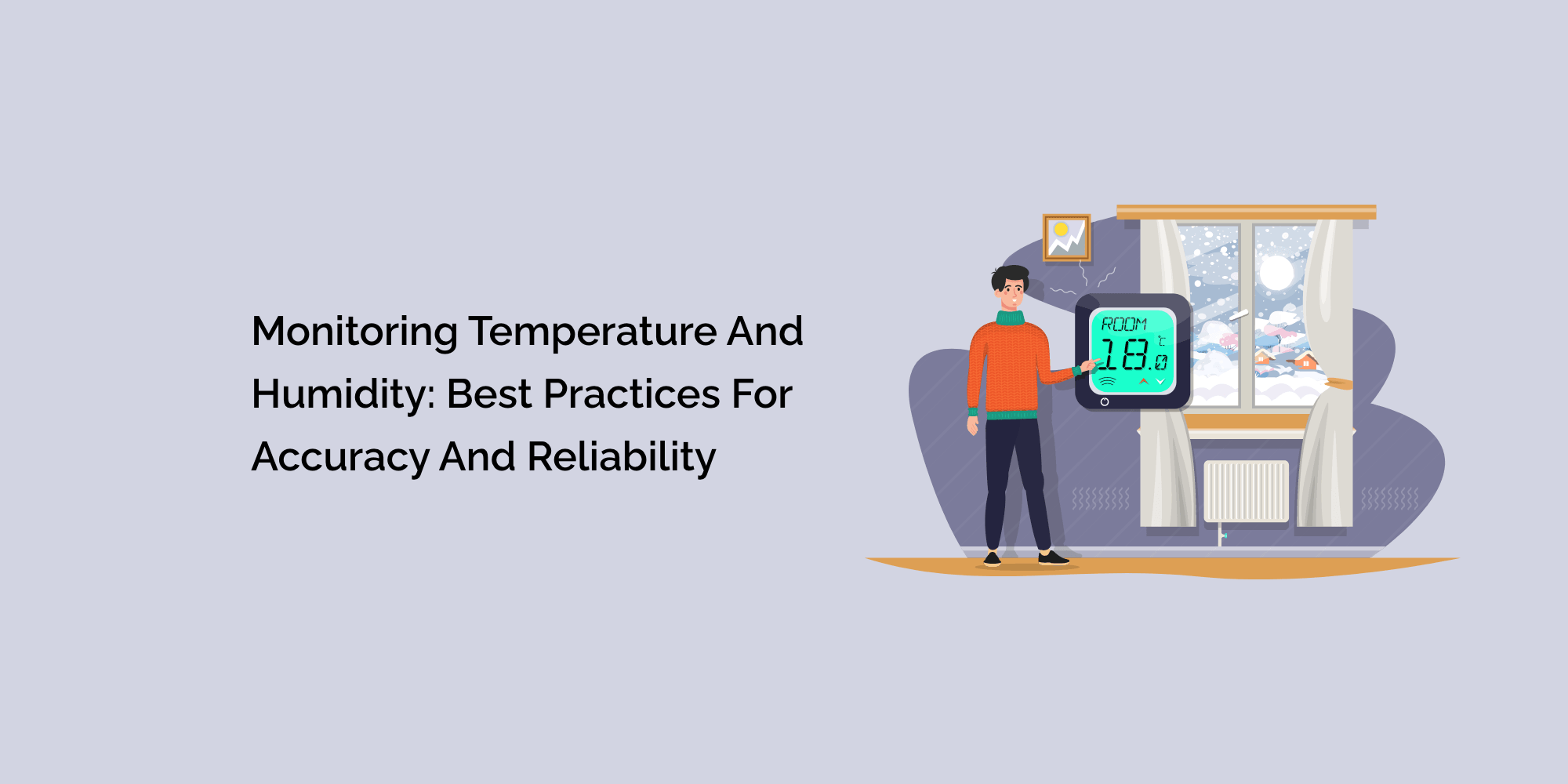Accurate monitoring of temperature and humidity is crucial in various industries, including healthcare, pharmaceuticals, food and beverage, and manufacturing. Maintaining optimal environmental conditions ensures product quality, regulatory compliance, and customer satisfaction. However, achieving accurate and reliable temperature and humidity monitoring can be challenging without proper guidelines and technologies.
In this blog post, we will explore the best practices for monitoring temperature and humidity, highlighting the role of advanced solutions like TempCube.
Calibrating Sensors for Accuracy
Accurate temperature and humidity monitoring starts with properly calibrated sensors. Calibration ensures that the sensors provide measurements within a specified range of accuracy. Regular calibration is essential to maintain the integrity of the monitoring system. TempCube, a leading solution in temperature and humidity monitoring, offers pre-calibrated sensors that provide accurate readings out of the box. However, it is recommended to periodically verify and recalibrate sensors to ensure continued accuracy.
Strategic Sensor Placement
The placement of sensors plays a critical role in obtaining accurate temperature and humidity readings. It is essential to strategically position sensors in areas where environmental conditions have the most significant impact on product quality. Consider factors such as airflow, heat sources, and potential areas of moisture accumulation. For example, in a pharmaceutical storage facility, sensors should be placed near critical medications or vaccines to ensure accurate monitoring.
TempCube's wireless sensors provide the flexibility to place them in multiple locations without the constraints of wired connections. This allows for optimal sensor placement and comprehensive monitoring throughout the facility or storage area.
Monitoring Critical Control Points
Identifying and monitoring critical control points (CCPs) is vital for maintaining product quality and safety. CCPs are specific points in a process where temperature or humidity variations can have a significant impact on product integrity. By focusing monitoring efforts on CCPs, businesses can ensure that the most critical areas are continuously monitored.
TempCube's cloud-based platform allows businesses to easily define and monitor CCPs. The system provides real-time data and customizable alerts, ensuring that any deviations from desired conditions are promptly detected and addressed.
Establishing Thresholds and Alerts
Defining thresholds for temperature and humidity is essential for effective monitoring. Thresholds establish the acceptable range of values, allowing businesses to detect deviations that may indicate a potential issue. TempCube enables businesses to set specific thresholds for each monitored area or product, ensuring that alerts are triggered when conditions exceed the predefined limits.
TempCube's advanced alert system sends notifications via SMS, email, or push notifications when thresholds are breached. This proactive approach allows businesses to take immediate action, minimizing the risk of product damage or loss.
Data Logging and Analysis
Accurate temperature and humidity monitoring rely on comprehensive data logging and analysis. TempCube's cloud-based platform securely stores all collected data, providing businesses with a centralized database for historical analysis and reporting.
Regular analysis of temperature and humidity data allows businesses to identify trends, patterns, and potential issues. TempCube's data visualization tools and customizable reports enable businesses to gain valuable insights, optimize processes, and make data-driven decisions.
Ensuring Redundancy and Backup
To ensure continuous monitoring and data integrity, it is crucial to have redundancy and backup systems in place. Power outages, network failures, or sensor malfunctions should not hinder temperature and humidity monitoring.
TempCube's wireless sensors are equipped with long-lasting batteries and can store data locally in case of temporary network disruptions. Once the connection is restored, the data is automatically synchronized with the cloud platform, ensuring data continuity and reliability.
Conclusion
Accurate and reliable temperature and humidity monitoring are essential for businesses across various industries. By following best practices and leveraging advanced solutions like TempCube, businesses can ensure product quality, regulatory compliance, and customer satisfaction.
Calibrating sensors regularly is crucial to maintain accurate measurements. TempCube provides pre-calibrated sensors and offers the option to verify and recalibrate them periodically to ensure ongoing accuracy.
Strategic sensor placement is key to obtaining accurate readings. Placing sensors in areas with the most significant impact on environmental conditions, such as critical control points, ensures comprehensive monitoring and early detection of deviations.
Defining thresholds and setting up alerts allow businesses to proactively respond to temperature and humidity variations. TempCube's advanced alert system ensures timely notifications, enabling swift corrective actions and minimizing risks.
Data logging and analysis play a vital role in identifying trends and potential issues. TempCube's cloud-based platform securely stores data, providing businesses with the ability to analyze historical records, generate reports, and gain valuable insights for process optimization and decision-making.
Ensuring redundancy and backup systems guarantee uninterrupted monitoring. TempCube's wireless sensors and local data storage capabilities ensure data continuity even during network disruptions, safeguarding the integrity of the monitoring process.
By implementing these best practices and leveraging the capabilities of solutions like TempCube, businesses can achieve accurate and reliable temperature and humidity monitoring. This leads to improved product quality, compliance with regulations, operational efficiency, and customer satisfaction.
In today's competitive landscape, businesses cannot afford to overlook the importance of temperature and humidity monitoring. With the guidance provided in this blog and the advanced features of TempCube, businesses can confidently monitor and maintain optimal environmental conditions, ensuring their products' integrity and success in the marketplace. Embrace the best practices and empower your business with accurate and reliable temperature and humidity monitoring using TempCube.








